Nuts are packed with nutrients! They are a plant-based source of protein which is great for people who prefer not to eat meat but want to make sure their diet includes a healthy amount of protein. In this post, we'll discuss the pros and cons of each type of nut!
What Are Nuts?
Most people know what nuts are and have eaten them in many forms. While some people love them and take every opportunity to add them to snacks and meals, others are less familiar with them.
Nuts are a type of food that comes from the seeds or fruits of various trees and plants. They are generally high in protein, healthy fats, fiber, vitamins, and minerals and are often consumed as a snack.
Some common types of nuts include almonds, cashews, walnuts, pecans, pistachios, hazelnuts, macadamia nuts, and Brazil nuts. I know you might be wondering… what about peanuts? While peanuts are typically known as a nut, they are actually a legume, more part of the bean family than the nut family, but since it is popularly known to be and consumed as a nut, we will include them in our list as we talk about the pros and cons of all the different nuts.
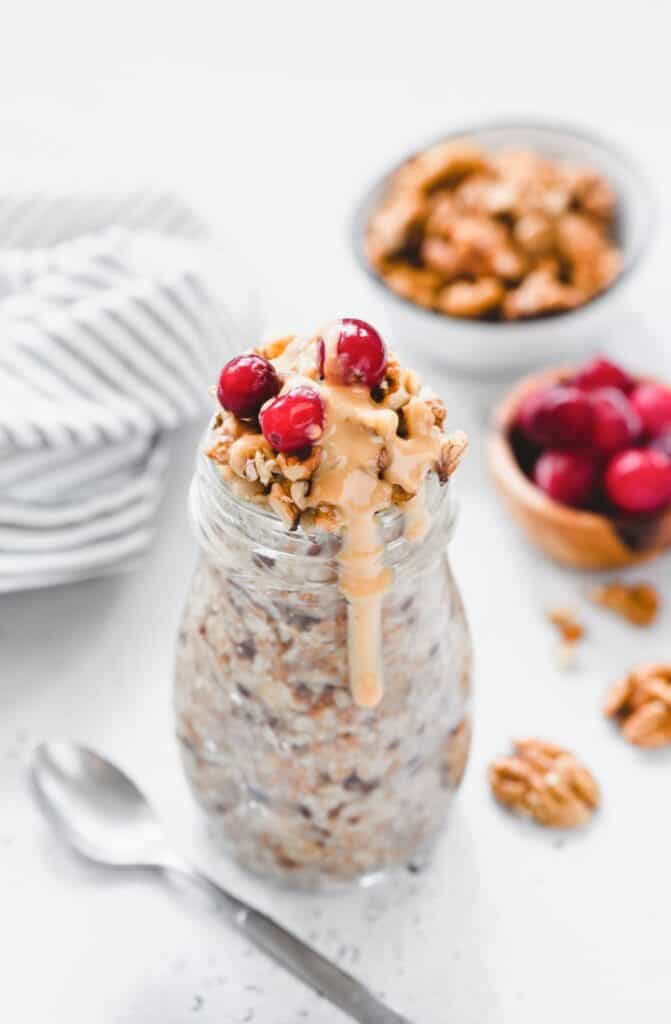
Why Are Nuts a Good Snack?
Nuts are a super popular snack, and this is for good reason. They do not need to be refrigerated, they have a super long shelf life, and they can be prepared and consumed in a variety of ways.
Convenience
Finding a snack you can keep in your pantry or gym bag and easily take on the go, no matter where you are going, is necessary for active and busy people! Nuts are easy to carry and require no preparation, making them a convenient snack option to take on the go.
Better yet, you can easily mix them with other dry goods like wasabi peas, dried fruits, chocolate pieces, and crackers to make a versatile and tasty trail mix. You can also buy nut butter in individual containers and pouches now, which makes for a portable spread to add to your crackers, fruits, and things like bagels and rice cakes.
Nutrient-dense
Nuts are packed with nutrients! They are a plant-based source of protein which is great for people who prefer not to eat meat but want to make sure their diet includes a healthy amount of protein. Nuts also contain fiber, healthy fats, vitamins, and minerals, making them nutritious snacks.
Yes, I said it, fat. Healthy fats, but fats indeed. While nuts provide you with healthy fats like omega-3s, which are great additions to your diet, they are high in calories. If you are trying to watch your calorie intake for whatever reason, you should still incorporate nuts into your diet. Just be conscious of your intake and practice portion control. For reference, 28 grams of nuts or about two tablespoons of nut butter can contain 160-200 calories. The same number of calories as 4 ounces of chicken and a helping of roasted vegetables. Enjoy nuts as a snack. Just consume them in moderation!
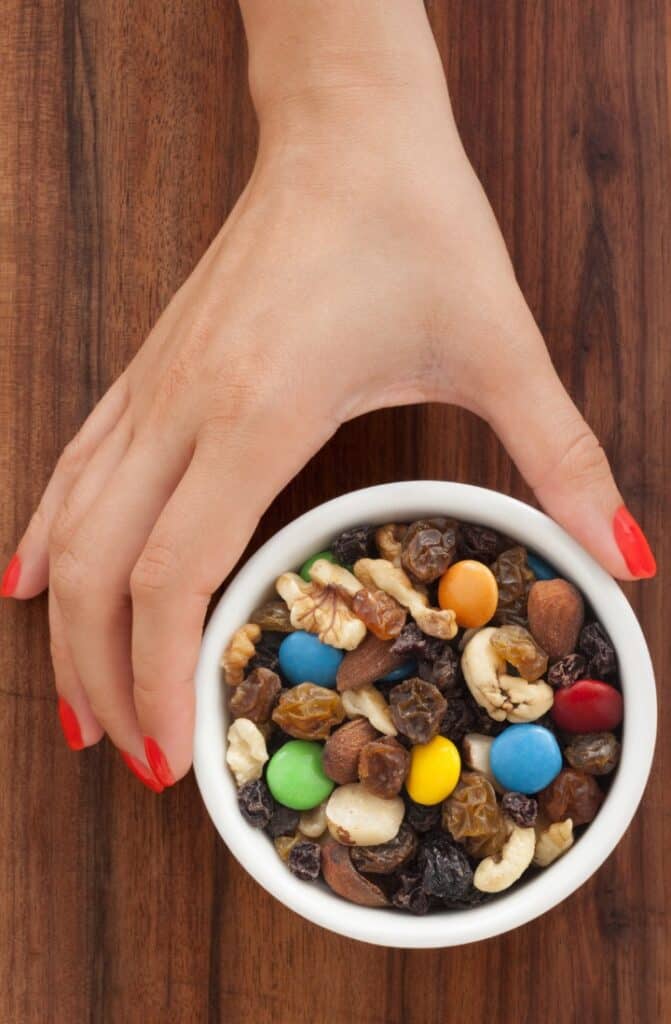
Satiation
As we just mentioned, nuts contain a good amount of protein, so they can be quite filling. They also contain a good amount of fiber which helps you to fill satiated. Feeling full can ultimately keep you from mindlessly snacking or consuming other less healthy snacks in excess. Adding two tablespoons of nut butter to your morning toast or drizzled on top of some fruit is a great way to balance a carb-heavy snack and keep you from craving more. You can also sprinkle nuts into a salad if you want to add additional protein and promote fullness.
Versatility
Nuts can be eaten on their own, added to recipes for extra flavor and nutrition, or used to make spreads like nut butter. There are so many ways to eat them! Not only can they be added to a variety of things, but they can also be prepared in a variety of ways. Roasted nuts tend to be preferred by people over raw nuts. But you can find them roasted, raw, salted, or unsalted, and even tossed in herbs and spices. They can even be ground up and made into a tasty sauce for dipping fruits or veggies. It is much like hummus.
Long shelf-life
If you want a snack that lasts for months, even if you forget about it. Then nuts are your go-to option. They have a long shelf life and can be stored for several months, making them a convenient pantry staple. This is why they make a great snack for outdoorsy people like hikers who go on long expedition
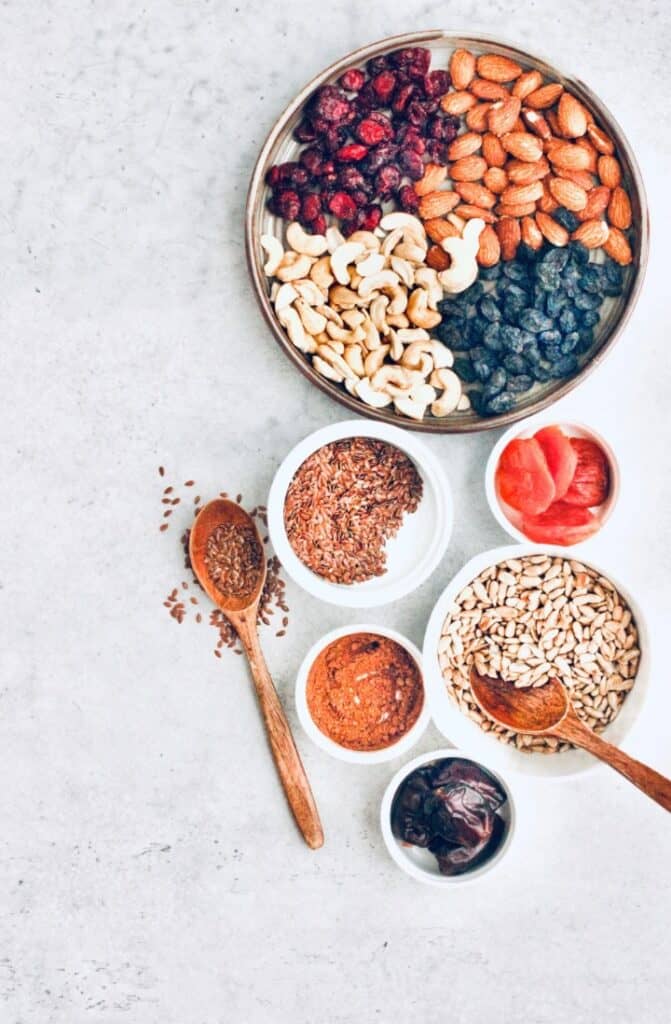
Pros and Cons of Nuts by Each Type
Almonds
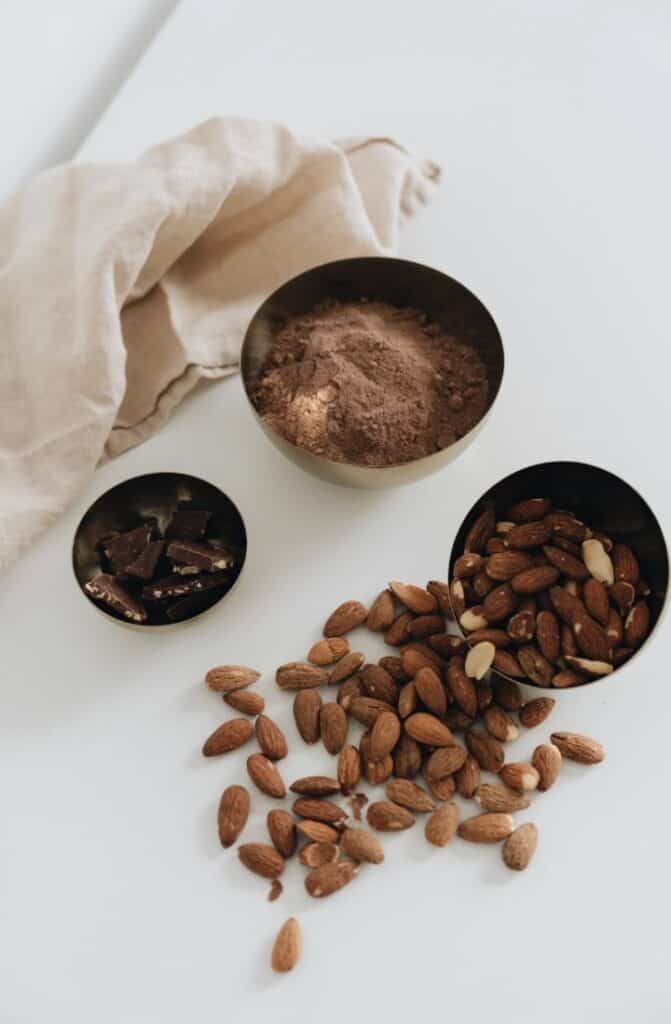
Here Are The Pros:
- Almonds are a great source of several important nutrients, including protein, fiber, healthy fats, vitamin E, magnesium, and calcium.
- They are also well known for being a heart-healthy nut! This is because almonds are high in monounsaturated and polyunsaturated fats. This is good because both types of fats can help lower cholesterol levels and reduce the risk of heart disease.
- Almonds are low in carbohydrates, making them a great snack option for people following a low-carb or ketogenic diet.
- One of the most versatile nuts, they can be eaten on their own, used as a topping for salads, added to baked goods, or blended into almond butter or even almond flour for baking or milk for drinking.
Here Are The Cons:
- Like all nuts, almonds have a high fat content and are not low in calories, so consuming them in moderation is important. The calories can add up quickly if you get too carried away with snacking. However, almond milk and dried almond butter powder are lower in calories because the fat is removed. Using these two almond products is a great way to get in some of the nutrition with less guilt.
- Consuming too many almonds at once can cause digestive issues such as bloating, gas, and diarrhea due to their high fiber content. Some people may be more sensitive and likely to experience this than others.
- The price of almonds can be a bit steep. They are often more expensive than other types of nuts, which may make them less accessible to some people. For the best price, check bulk sections of grocery stores.
- Some people may have an almond allergy. Almonds are among the most common nuts that can trigger allergies, so people with nut allergies should avoid them.
Cashews
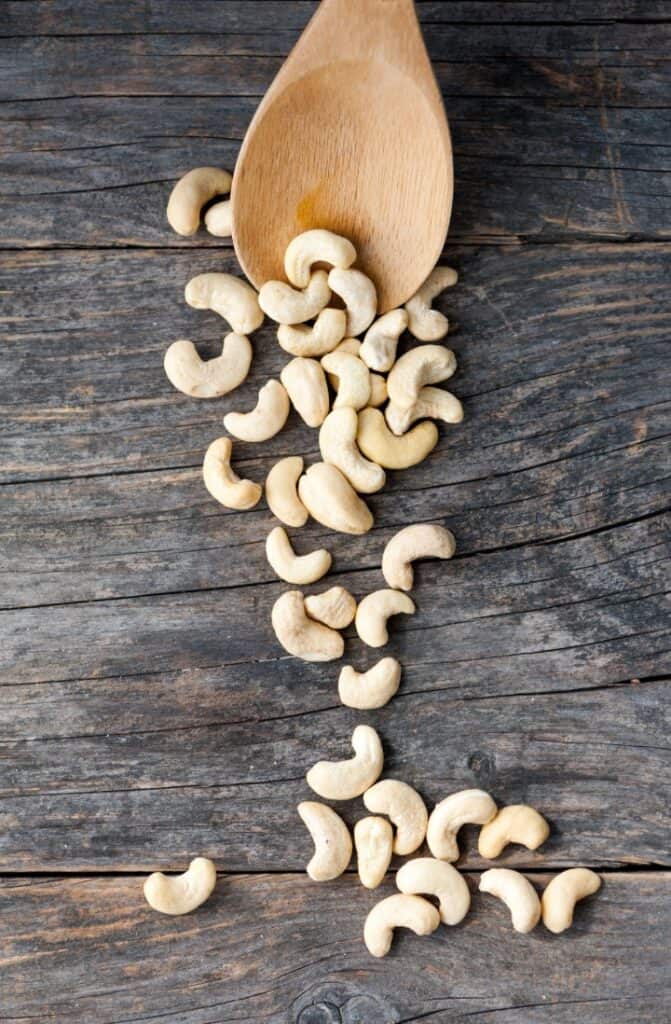
Here Are The Pros:
- All nuts are quite nutrient-dense, and cashews are no exception. They are a great source of magnesium, copper, and zinc minerals, which is unique to them as a nut and contains protein, healthy fats, fiber, and other vitamins.
- Cashews may play a role in improving your heart health. They are low in saturated fat, which can lead to reduced risk of heart disease.
- Cashews are delicious to eat on their own, both raw and roasted. They are commonly used as a topping for salads, added to stir-fries, or blended into cashew butter or cheese. Cashew ice cream is a very creamy dairy-free ice cream alternative that is a must-try. This nut is frequently used by vegans as a base for sauces and desserts.
- Cashews may be helpful in helping with weight management. While not as low in carbs as other nuts, cashews are relatively low in carbohydrates but high in protein and fiber. This helps to promote feelings of fullness and reduce overall calorie intake.
Here Are The Cons:
- Cashews are not low-calorie, so while they are creamy and delicious, be aware that they are not a diet food and should not be consumed excessively.
- Due to the amount of fiber in cashews and their richness, cashews may not sit well with everyone. If you do not eat them often, try not to go overboard if you decide to add them to your diet.
- As mentioned, almonds can be expensive. Most nuts are. But cashews tend to be even more expensive than some of the others. Try looking for sales on them!
- Cashews are not allergen friendly, so if you tend to be allergic to other nuts, it is best not to risk it.
Walnuts
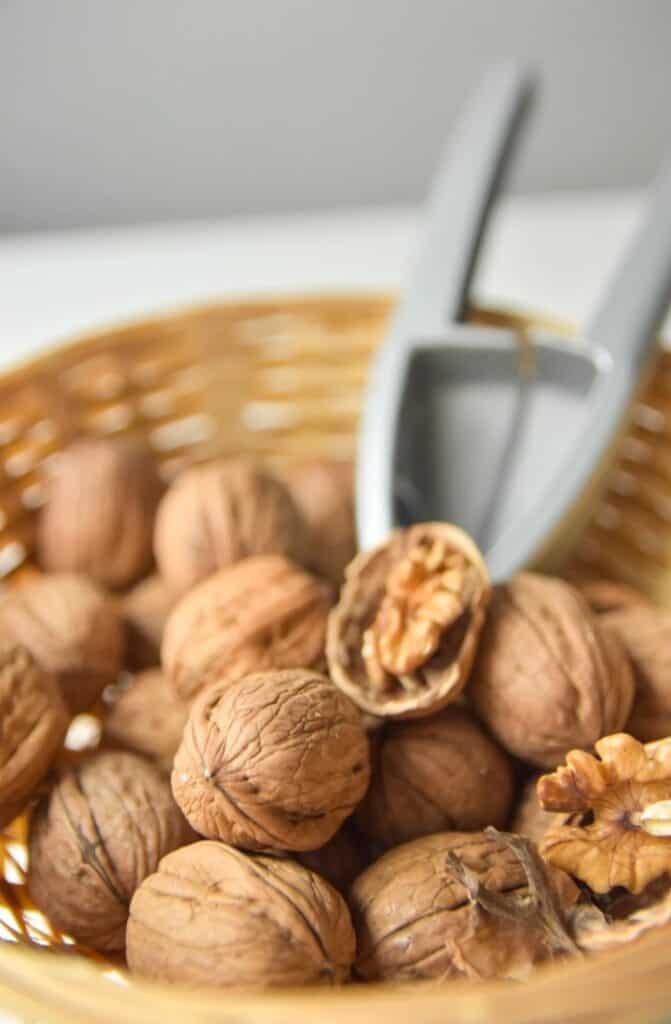
Here Are The Pros:
- You can find minerals like magnesium, copper, and manganese in walnuts which are full of health benefits. They also contain fiber and protein like other nuts, which are an important part of any diet.
- Adding omega-3 fatty acids to your diet is a great idea if you want to reduce inflammation and lower your risk of heart disease. Walnuts have a healthy amount of omega-3 fatty acids, so eat up.
- Some studies suggest that consuming walnuts may improve cognitive function and reduce the risk of age-related cognitive decline.
- Walnuts can be eaten on their own but are less likely to than others. They are more commonly eaten candied or by roasting first and adding to salads or desserts. However, they are found in trail mixes and packaged mixed nuts sometimes. They are commonly used in baked goods like banana bread and brownies. It is also less common that you find walnut milk or butter.
Here Are The Cons:
- Walnuts may cause you to experience weight gain if you overdo it. Due to their fat content, they are higher in calories, so practice portion control when consuming them especially if you have struggled with obesity.
- People with a nut allergy will likely be allergic to walnuts, but many people without nut allergies have mild reactions when consuming walnuts, like sores or itching in their mouths. If this happens to you, try eating roasted walnuts over raw, which may lessen the action. Most people who experience this are not at risk of anything serious, just temporary discomfort.
- Walnuts have a high oil content, which can cause them to go rancid quickly if not stored properly. Try putting them in the freezer if you want to save them for later use.
- Some people feel walnuts are rather bitter and less tasty than nuts, which is likely why they are not often eaten as a stand-alone snack.
Pecans
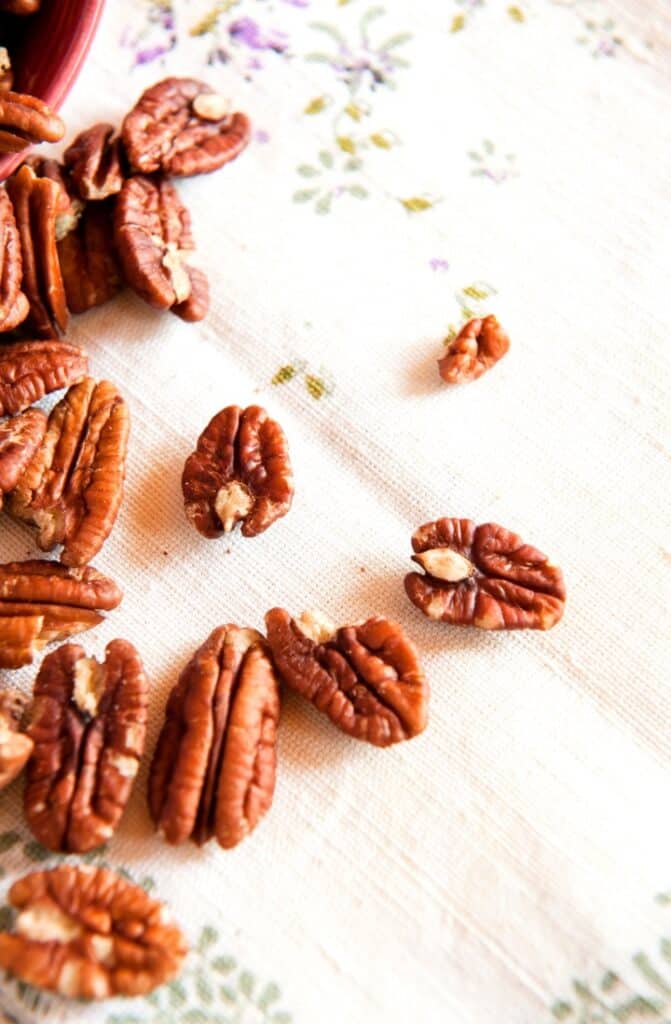
Here Are The Pros:
- Pecans contain good protein, an essential part of any balanced diet. They are also full of healthy fats! Thiamin, magnesium, and zinc are also found in pecans.
- Monounsaturated and polyunsaturated fats can be helpful in lowering cholesterol levels which helps to keep your heart healthy. If you have a family or personal history of high cholesterol, adding them to your diet is likely a great idea.
- Pecans have high fiber content, which can help improve digestion and promote fullness.
- They are one lower-carb nut and a great option for people following a keto diet.
- Pecans are quite often eaten on their own. They can be bought roasted with various seasons added. They are well known for being a stand-alone dessert, and candied pecans are a stadium favorite, though not the healthiest choice of consumption. They are also great when added to salads, oatmeal, and granola or blended into butter for spreading onto your toast.
Here Are The Cons:
- Unfortunately, pecans are not lower calories, and although they have health benefits, consuming handfuls a day is unlikely to do anything good for your waistline, so be sure to portion them out.
- Pecans are rich and creamy and may not sit well with everyone’s gut due to their richness and fiber content. Do not overdo it, or your stomach might get upset with you.
- Pecans are easily found in grocery stores, but the price tag is not always pretty. Instead of buying them in the baking aisle, if you plan to bake with them, check other areas of the store where you can buy more for less money.
- Just as the other nuts mentioned, pecans are not an allergy-friendly nut; you should steer clear if this concerns you.
Pistachios
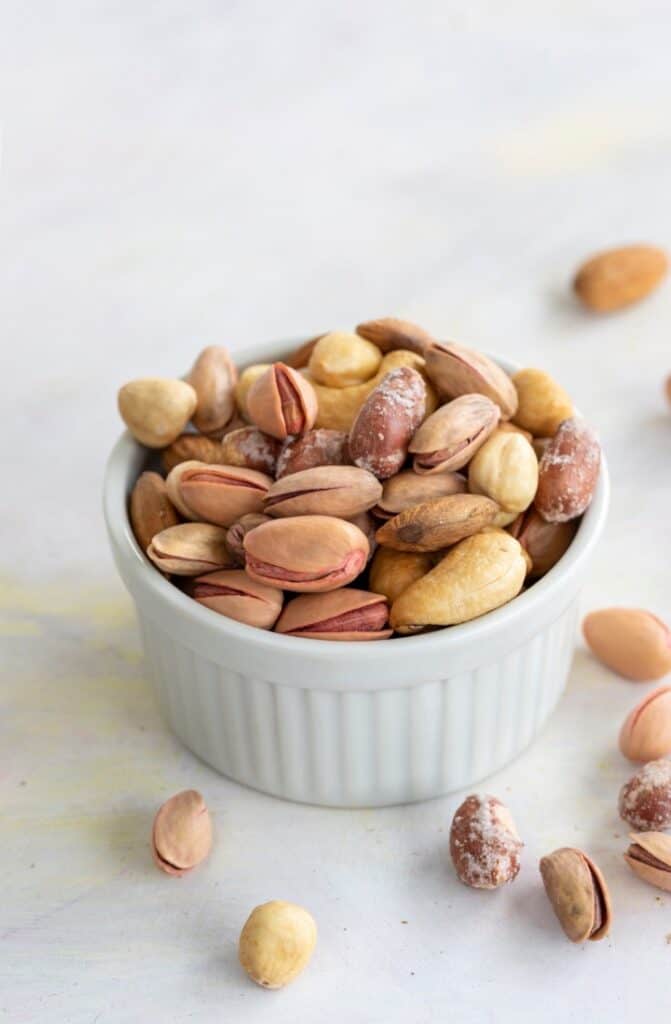
Here Are The Pros:
- Pistachios contain a good amount of vitamin B6, copper, and manganese.
- This nut contains the right amounts of all the right fats so you can feel good about the healthy oils you are consuming.
- Studies have been done that suggest that eating pistachios might improve blood sugar control in people who struggle with complications like diabetes or metabolic syndrome.
- Pistachios are commonly used in Mediterranean desserts like baklava. They are also found in stores, both shelled and unshelled and can be eaten as a stand-alone snack or used as a topping on things like salads or yogurt. They are one of the few nuts commonly sold in their shell.
- You can often find different flavors of them, shelled and unshelled.
Here Are The Cons:
- Once again, nuts are not low-fat or low-calorie and may not be the best snack choice for everyone due to their high-calorie content. If you want to enjoy them but are worried about the calories, try mixing them into other foods so that you can still get the benefits without racking up the calories.
- Pistachios take some time and effort to eat if you buy them in the shell, and sometimes small pieces or the shell can break off, so watch your teeth!
- Pistachios have a much different taste than many other nuts and are not typically eaten without being roasted. Their taste may not be for everyone.
- If you want to buy them already shelled, they are pretty expensive, but taking the shell off is part of the experience, so do not be scared off by having to do that.
Hazelnuts
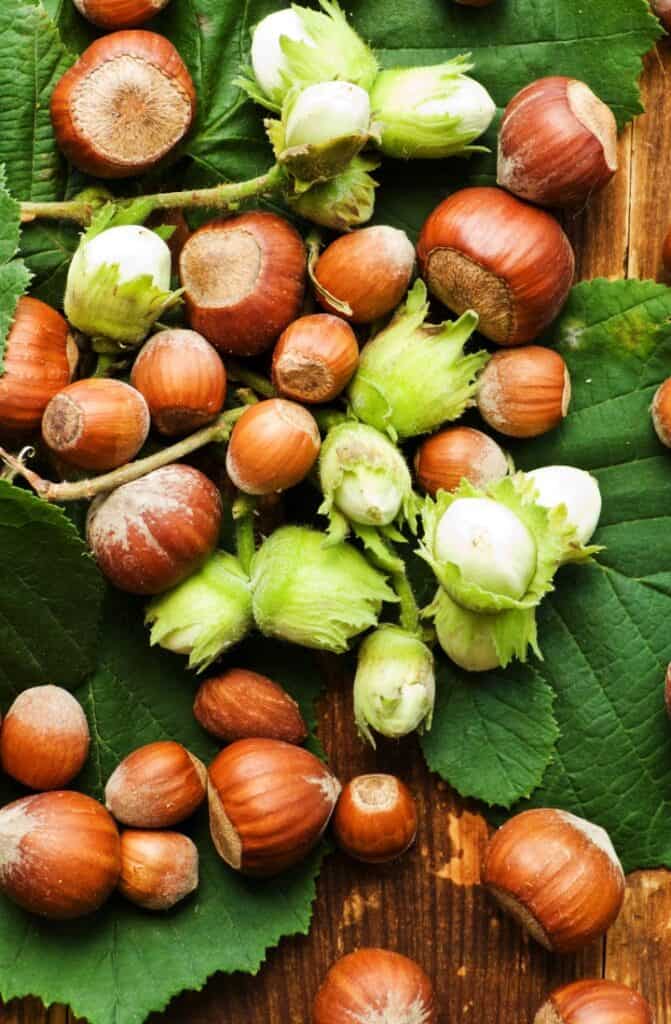
Here Are The Pros:
- Hazelnuts are high in monounsaturated and polyunsaturated fats, which can help lower LDL (bad) cholesterol levels and reduce the risk of heart disease.
- If you struggle with digestive health issues or constipation, hazelnuts are a great snack due to their fiber content.
- Different vitamins and minerals, including vitamin E, magnesium, and potassium, are found in hazelnuts and are great for your health.
- Rich in antioxidants, hazelnuts include phenolic compounds, which can help protect the body from cellular damage and may reduce the risk of chronic diseases like cancer and Alzheimer's.
- Hazelnuts have a sweet and nutty flavor that can add depth and richness to a variety of dishes. They can be eaten raw or roasted and are the main ingredient in the tasty condiment Nutella. They are also commonly found in fancy chocolates and baked goods.
Here Are The Cons:
- One ounce (28 grams) of hazelnuts contains around 176 calories and 17 grams of fat. While the fat in hazelnuts is primarily healthy monounsaturated and polyunsaturated fats, consuming too many calories can lead to weight gain.
- Like other nuts, hazelnuts can cause allergic reactions in some people, which can range from mild to severe. If you have a nut allergy, avoiding hazelnuts and other nuts is important to prevent an allergic reaction.
- Aflatoxins are toxic compounds produced by certain types of mold that can grow on crops like nuts. Hazelnuts, in particular, are susceptible to aflatoxin contamination. While the risk is generally low, consuming high levels of aflatoxins over time can increase the risk of liver cancer.
Macadamia Nuts
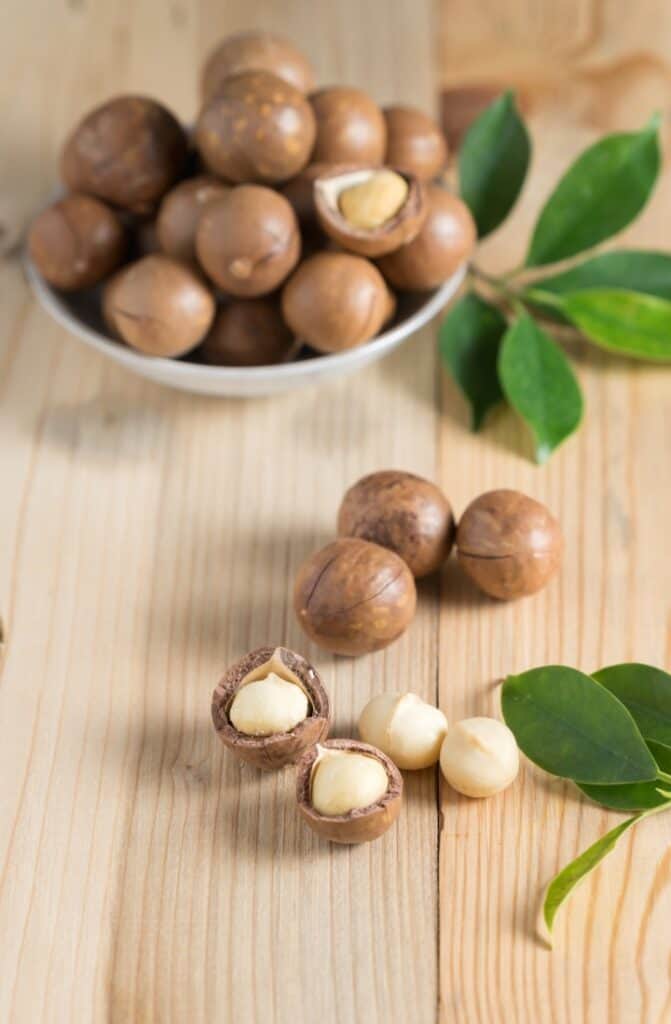
Here Are The Pros:
- Macadamia nuts have heart-healthy properties like the other nuts mentioned, and consuming them can help lower bad cholesterol levels and keep your heart healthier for longer.
- You can find thiamin, vitamin B6, iron, and magnesium in macadamia nuts which are great vitamins and minerals to add to your diet.
- Macadamia nuts contain antioxidants such as flavonoids and tocopherols. These antioxidants can help protect the body against oxidative stress and reduce the risk of chronic diseases such as cancer and Alzheimer's.
- Macadamia nuts are relatively low in carbohydrates, making them a favorite for people following a low-carb or ketogenic diet.
- The flavor and texture of macadamia nuts are unique. They are rich and buttery. They are great to eat on their own, roasted and salted but are also eaten raw and can be found in various sweet and savory dishes. Cookies are a macadamia nut's best friend! They are also used to crust different meats and fish.
Here Are The Cons:
- It is super easy to overdo it when eating macadamia nuts which is not a great thing because they are quite high in calories.
- Macadamia nuts can be harder to find than others and tend to be in small containers with a big price tag.
- Unlike other nuts, macadamia nuts seem less likely to be sold in various flavors.
Brazil Nuts
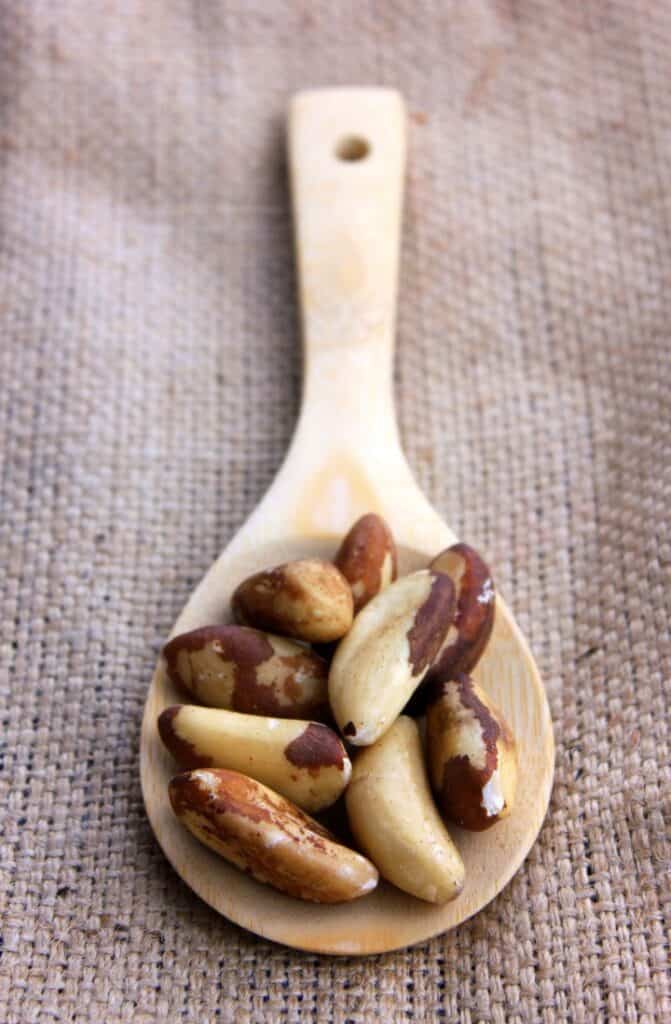
Here Are The Pros:
- These nuts are unique in size and taste and are a great source of protein. They also contain several vitamins and minerals, such as selenium, magnesium, and vitamin E.
- Brazil nuts are a rich source of selenium, which is important for thyroid function and may help to reduce the risk of thyroid problems.
- Some studies suggest that consuming Brazil nuts helps reduce inflammation in the body due to their antioxidant content.
- You can eat Brazil nuts by themselves or in other foods. They are commonly found in nut mixes, but there are usually fewer of them than the other nuts in the mixes.
Here Are The Cons:
- Brazil nuts are very high in selenium, so consuming too many at once can cause selenium toxicity. Consuming no more than 1-2 Brazil nuts per day is recommended.
- These nuts can cause allergic reactions in some people, so it is important to consider that when trying them for the first time.
- It is not as easy to find Brazil nuts for purchase on their own. They tend to primarily come mixed with other nuts; if you find them alone, they are often raw rather than roasted and salted, which is one of the most delicious ways to consume them.
- In general, brazil nuts are not the most popular nut out there but are definitely worth trying.
Peanuts
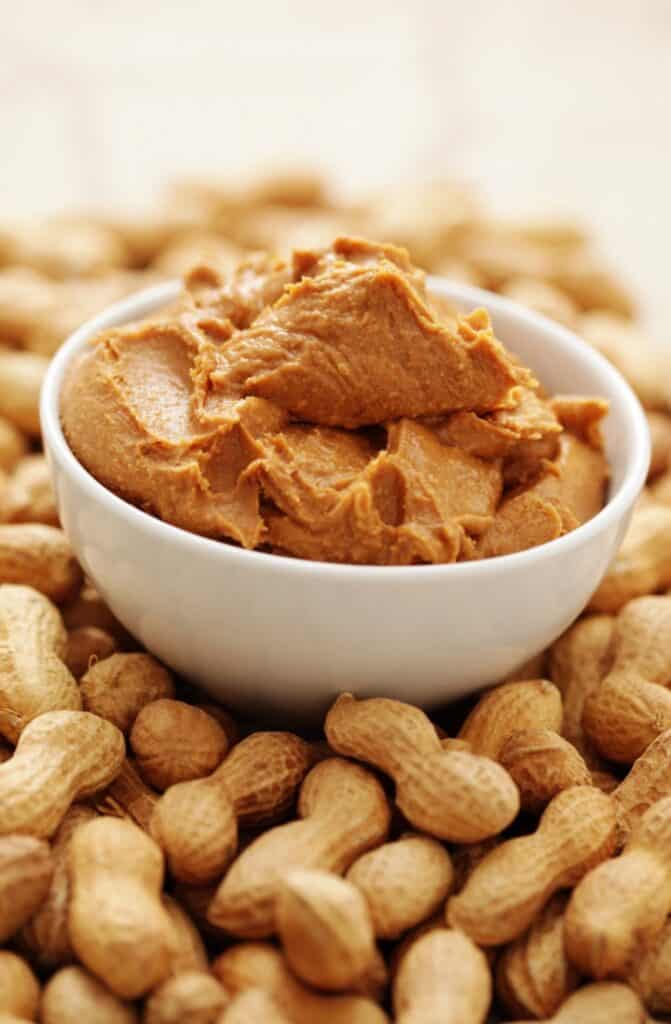
Here Are The Pros:
- Peanuts are a great source of plant-based protein, making them a popular snack among vegetarians and vegans.
- These “nuts” contain mostly healthy fats, which are important for heart health and brain function.
- Vitamin E, magnesium, and phosphorus are found in peanuts and are great for your health.
- Peanuts have been linked to a reduced risk of chronic diseases such as heart disease, type 2 diabetes, and certain cancers due to the presence of antioxidants and other beneficial compounds.
Here Are The Cons:
- While delicious, peanuts are high in calories and easy to overeat, so be careful.
- Some people have a severe life-threatening allergy to peanuts and cannot even be near them so it is important to consider where you are consuming them and take note of any weird reactions you personally have to them.
- Peanuts can contain a naturally occurring toxin called aflatoxin, which is linked to liver cancer.
- Many commercially available peanut products are highly processed and may contain added sugar, salt, and unhealthy fats.
How Are Nuts Used in Meals?
Nuts have long been used in sweet and savory dishes, and the ways they are used seem to continue to get more and more creative. With gluten and dairy intolerance and allergies seemingly becoming more and more prevalent, people often turn to nuts to make flour and milk so that they can still enjoy baked and breaded goods as well as sweet and savory delights like cheeses and ice creams.
Vegan individuals also use nuts by taking advantage of their creaminess and creating rich cream sauces and sweet dessert fillings. Discovering that nut milk can make imitation dairy products has been a great find for those in the vegan community.

Salads: Nuts can be added to salads for a crunchy texture and added protein. They can be used in sweet or savory forms. Some popular salad toppings include almonds, pecans, and walnuts.
Baked goods: Muffins, bread, cookies, and cakes often have nuts tossed in for added texture and flavor. Not everyone is in favor of this, but some people love it. Popular nuts used in baking include almonds, walnuts, pecans, and hazelnuts.
Trail mix: A tasty snack that can be eaten on the go, trail mix is one of the most common ways that nuts are consumed. It usually includes a mixture of nuts, seeds, and dried fruit or veggies. Trail mix is a popular snack for hiking, camping, and other outdoor activities.
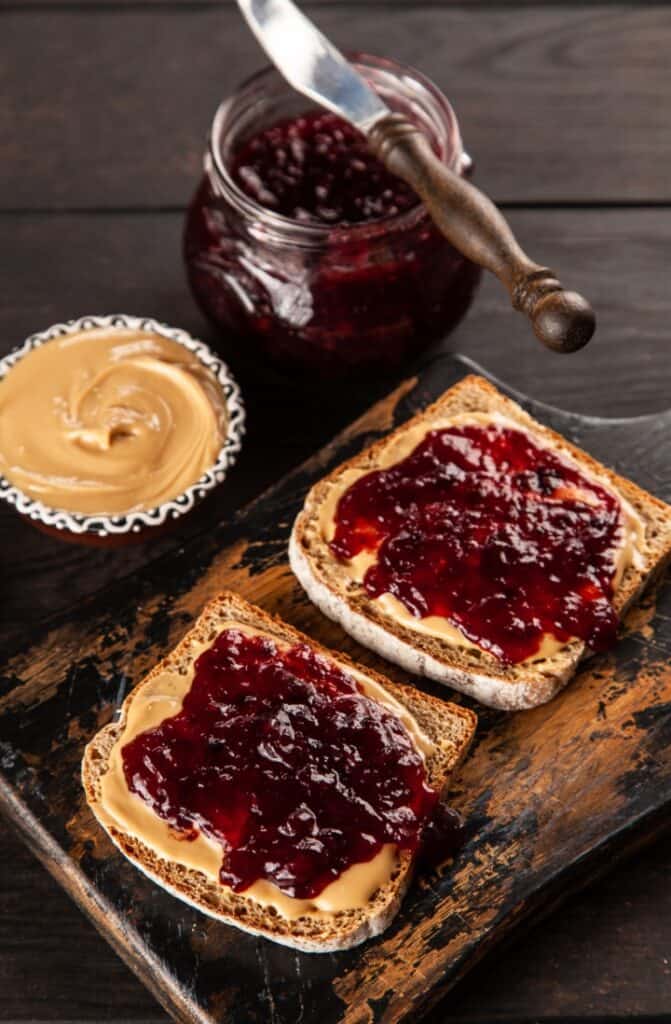
Nut butter: This form of nut consumption has been around forever. For a long time, only peanuts were well known for being put into butter form, but now you can find almost any nut in this form. You can even find a variety of flavors of nut butter and different nut combination butter as well. These spreads can be used as a topping for toast or fruit, or as a dip for vegetables. It can also be drizzled over smoothie and yogurt bowls or oatmeal.
Meat dishes: Many middle eastern, Mediterranean, and Asian meat dishes include nuts. They are meant to add texture and flavor to these dishes. For example, chopped peanuts or almonds can be used as a topping for stir-fry dishes, or ground nuts can be used as a coating for chicken or fish.
Vegetarian and vegan dishes: Nuts can be used as a protein source in vegetarian and vegan dishes. Cashews can be used to make a creamy sauce for pasta or vegetables, and almonds can be used to make almond milk for smoothies. Nut milk can even be used to make imitation cheese.
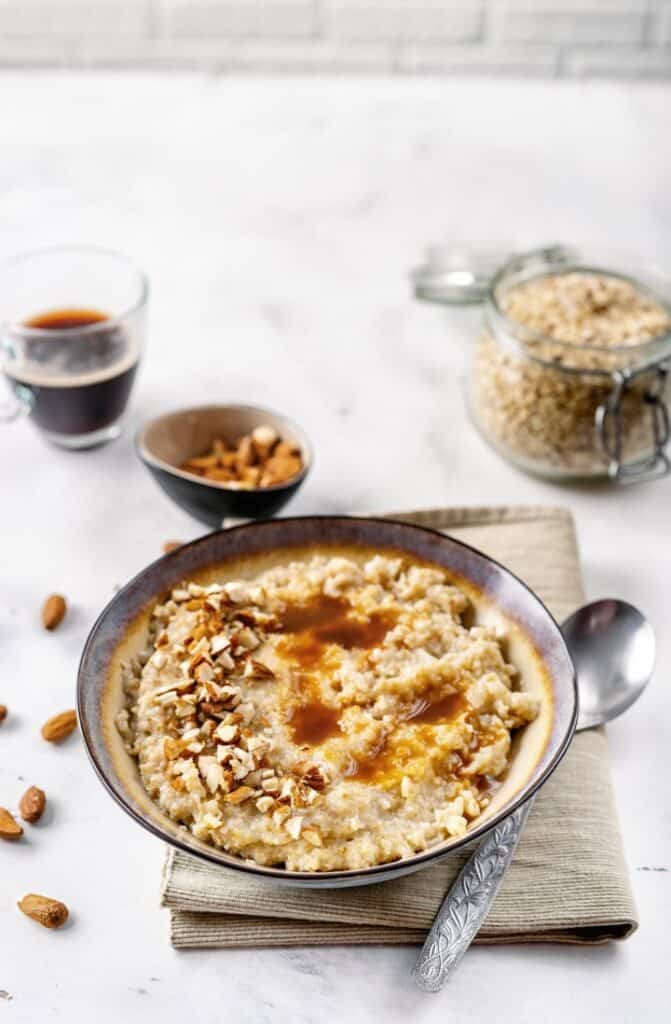
Takeaways
Nuts are delicious and versatile. You can try many different types of nuts and ways to add them to your diet. They also have many positive health benefits. Remember their calorie content and the cons of the different nuts when choosing which ones to eat and how to add them to your diet. Be creative, try new things you have not considered eating before, and share the nut wealth with others!

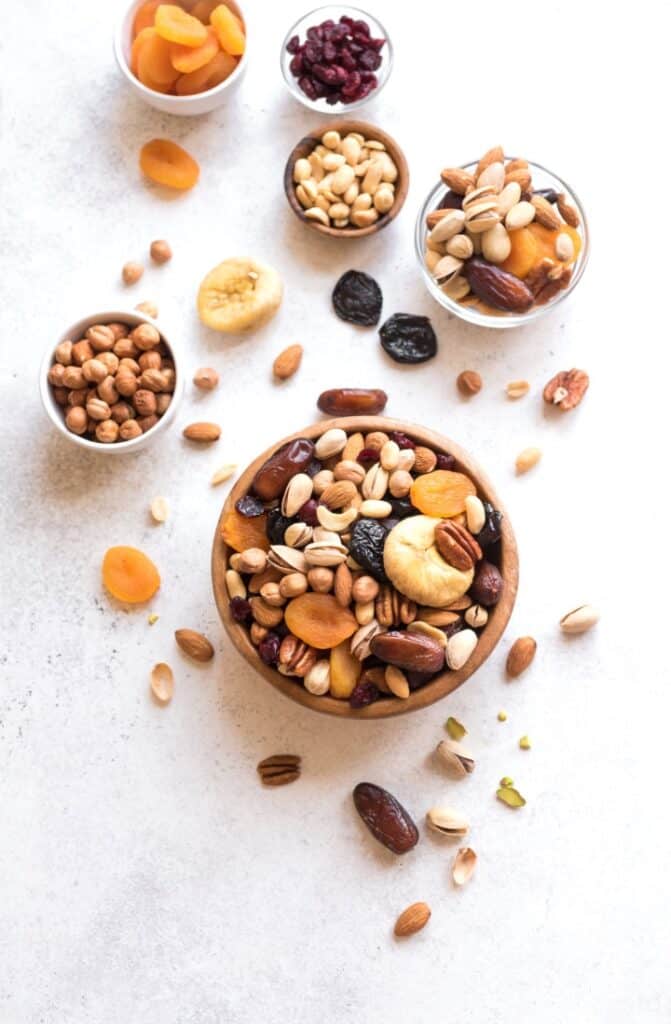

Comments
No Comments